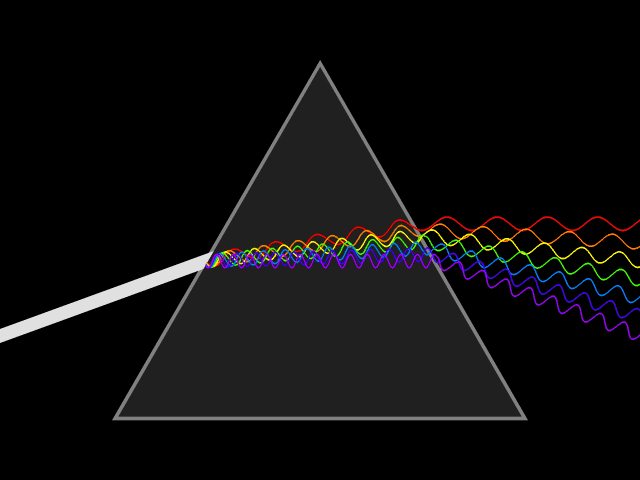
Dyofix pond dyes are non-toxic & eco-friendly
Dyofix lake and pond colours are specially formulates dyes. They are manufactured using the highest quality colours.
What is daylight?
Daylight (or white light) is made up of a series of colours, collectively referred to as a spectrum.
This is known because when a beam of white light is passed through a glass prism; the white light splits into seven visible colours with red shades at one end through to blues and violets at the other.
Filters block colours
When a white light source has a coloured filter placed over the beam the observer will then see the light as a colour, i.e. a green filter shows as green – blue as blue, etc.
It is useful to realize that when white light hits the filter, the other colours are being blocked. The filter is allowing only certain colours of the spectrum through.
Dyofix blocks the red end of the spectrum
By adding DyoFix to water, a filter is being created to block colours from the red end of the spectrum getting through to the bottom of your pond or lake.
How does this help?
Photosynthesis needs red light
All plants, surface or submerged use the process of photosynthesis to thrive and grow and the whole process relies on red light to drive it.
By adding a filter to the pond or lake water you are blocking some, or all, of the red light and the process of photosynthesis is interrupted, with the result of little or no further growth.
A little about Photosynthesis
All green plants need sunlight for their reproduction, the energy from sunlight acts upon a green pigment (chlorophyll) which combines with water and carbon dioxide from the local environment to produce sugars and oxygen. Chlorophyll absorbs red light (centred about 650nm). Leaves look green as blue and yellow are main colours reflected by chlorophyll.
Photosynthesis is the manufacturing of sugars from carbon dioxide and water, in the presence of chlorophyll and light energy. Oxygen is then released as waste from the process.
The light source used for photosynthesis is natural daylight. It is this element of photosynthesis that can be manipulated to stunt the growth of algae and submerged weeds.
In a pond containing clear water, light easily passes through and any plants or nutrients present use this to grow. Plants get taller and grow towards the surface and single cell organisms (such as algae) start to float towards the surface. It is the floating, or suspended cells that can make the pond water take on the “pea green soup” look.
By preventing some of the light from reaching below the surface of a pond, photosynthesis is interrupted in deep-lying pond life such as algae. However, surface life such as lily pads or reeds, which photosynthesis either on or above the surface of the water, will not be affected. As it is not practical or desirable to have ponds built indoors or permanently covered, it has become necessary to develop another way of preventing the light from reaching the base of the pond.


